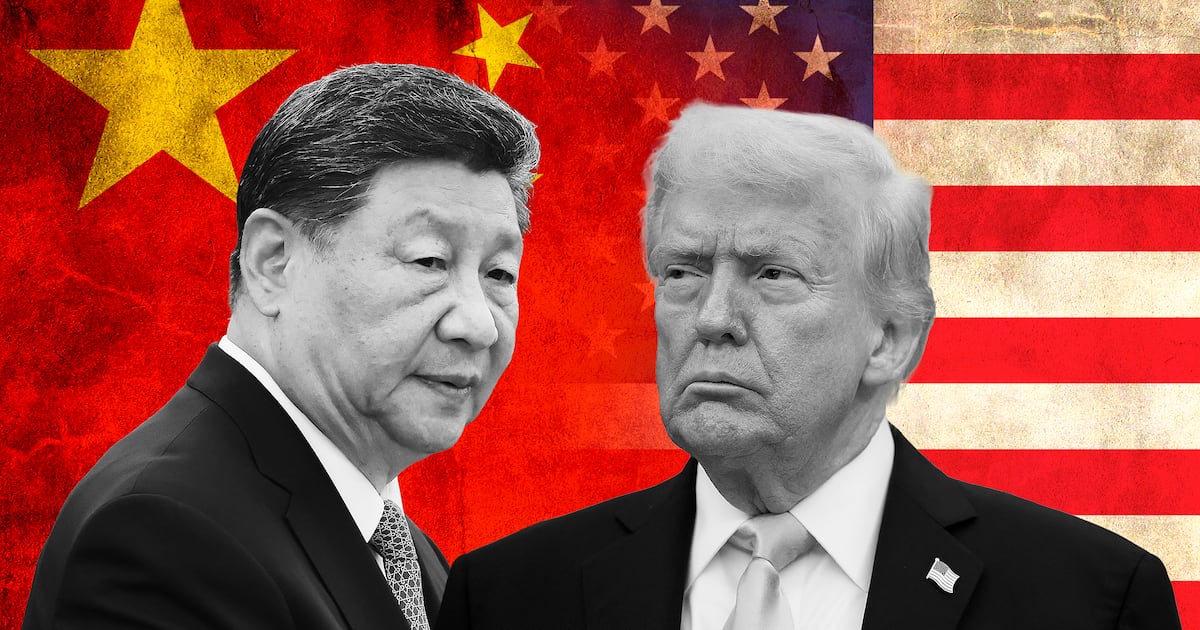World
Trump and Xi Prepare for Crucial Meeting Amid Trade Tensions

As Donald Trump and Xi Jinping gear up for their highly anticipated meeting at the Apec Summit in South Korea on October 12, 2025, discussions surrounding a potential trade agreement between the United States and China have already been shaped by their respective officials. Scott Bessent, US Treasury Secretary, confirmed that a “very substantial framework” has been established, indicating both leaders will approach the talks with a clear agenda and expectations.
Xi Jinping enters this meeting in a notably stronger position compared to their last encounter during the G20 Summit in Osaka in 2019. Since then, China has adopted a more assertive stance in its trade policies, countering Trump’s strategies with calculated measures. While Trump previously caught Chinese officials off guard with sudden trade decisions, Xi has now had ample time to analyze Trump’s tactics and prepare for a protracted trade conflict.
China’s Strategic Maneuvers
During the Trump administration, the US imposed severe tariffs on Chinese goods, prompting a series of retaliatory actions from Beijing, including restrictions on the export of rare earth elements. These minerals are vital for manufacturing a range of high-tech products, from electronics to automobiles. The situation escalated when the US government announced increased tariffs on Chinese imports, leading to Xi’s decision to limit the export of rare earths, a move that significantly impacted American manufacturing.
In September 2025, the US added more Chinese companies to its sanctions list, effectively barring them from engaging in trade with American firms. This expansion of the sanctions list has dire implications for various sectors of the US economy, particularly agriculture. Notably, China has halted imports of US soybeans, which previously constituted a significant market worth $12.6 billion in 2024, leaving American farmers seeking new markets.
Despite these challenges, recent data indicates that China’s exports have continued to grow, with a marked shift away from reliance on the US market. In September, the proportion of Chinese exports to the US fell to just over 10 percent, down from the high teens a few years ago. This diversification in trade, particularly with ASEAN countries, Latin America, and Africa, has allowed China to weather the storm of US tariffs.
Broader Implications of the Meeting
Beyond immediate trade concerns, Xi’s ambitions for this dialogue may extend to addressing broader geopolitical issues, including US efforts to restrict China’s access to advanced technologies like semiconductors. Xi aims to secure commitments from Trump regarding US support for Taiwan, seeking assurances against any push for Taiwanese independence. Historically, Trump has shown little inclination to enforce military support for Taiwan, which may embolden Xi in his approach.
Despite the tensions, Trump expressed optimism about the potential for a meaningful agreement, stating, “I expect to make a good deal with him.” He highlighted past grievances, asserting that the US has been at a disadvantage in trade negotiations with China. His administration’s focus remains on prioritizing American interests while navigating a complex relationship with a rising economic rival.
As both leaders prepare for their meeting, analysts from various sectors are closely monitoring developments. A letter from the National Foreign Trade Council (NFTC), which represents major corporations like Amazon and Exxon Mobil, urged the suspension of a newly expanded sanctions rule that could jeopardize billions in exports and disrupt supply chains.
Farmers in the Midwest, heavily reliant on soybean exports to China, are particularly vulnerable amid these trade disputes. Many are looking to the Trump administration for assistance as they adapt to the shifting landscape of international trade.
Ultimately, while a comprehensive agreement may not emerge from this meeting, it holds the potential to stabilize relations and set the stage for future negotiations. The dynamic between Trump and Xi will likely shape not just economic interactions but also the broader geopolitical landscape as both nations navigate this complex, intertwined relationship.
-

 Top Stories2 months ago
Top Stories2 months agoTributes Surge for 9-Year-Old Leon Briody After Cancer Battle
-

 Entertainment4 months ago
Entertainment4 months agoAimee Osbourne Joins Family for Emotional Tribute to Ozzy
-

 Politics4 months ago
Politics4 months agoDanny Healy-Rae Considers Complaint After Altercation with Garda
-

 Top Stories3 months ago
Top Stories3 months agoIreland Enjoys Summer Heat as Hurricane Erin Approaches Atlantic
-

 World4 months ago
World4 months agoHawaii Commemorates 80 Years Since Hiroshima Bombing with Ceremony
-

 Top Stories2 months ago
Top Stories2 months agoNewcastle West Woman Patricia Foley Found Safe After Urgent Search
-

 Top Stories4 months ago
Top Stories4 months agoFianna Fáil TDs Urgently Consider Maire Geoghegan-Quinn for Presidency
-

 World4 months ago
World4 months agoCouple Convicted of Murdering Two-Year-Old Grandson in Wales
-

 World4 months ago
World4 months agoGaza Aid Distribution Tragedy: 20 Killed Amid Ongoing Violence
-

 World4 months ago
World4 months agoAristocrat Constance Marten and Partner Convicted of Infant Murder
-

 Top Stories4 months ago
Top Stories4 months agoClimbing Errigal: A Must-Do Summer Adventure in Donegal
-

 Top Stories4 months ago
Top Stories4 months agoHike Donegal’s Errigal Mountain NOW for Unforgettable Summer Views









